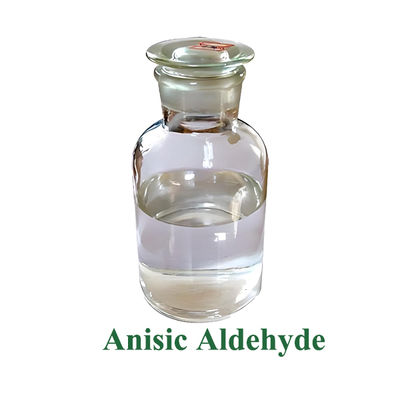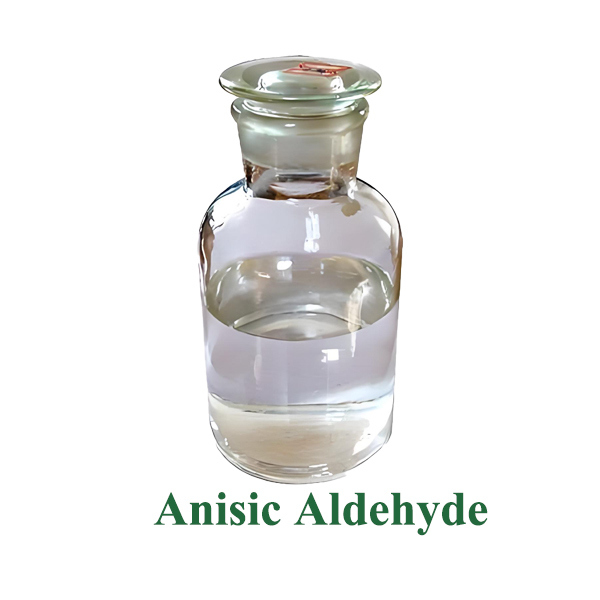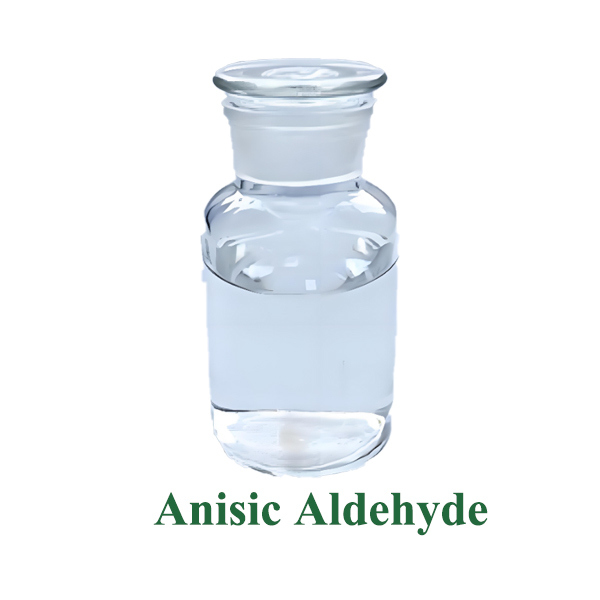
Factory direct sales of 99% pure anisaldehyde 123-11-5, transparent to yellow
-
Highlight
pure anisaldehyde essential oil
,transparent anisaldehyde 123-11-5
,yellow anisaldehyde plant oil
-
Product NameAnisic Aldehyde
-
CAS123-11-5
-
Purity99.9%
-
AppearanceLiquid
-
Shelf Life2 Years
-
MOQ5KG
-
PackingFoil Bag,Bottled,Drum,Carton,Container
-
QualityNatural Raw Materials, Safe And Harmless, No Addition
-
Boiling Point248 °C(lit.)
-
Density1.121
-
EINECS204-602-6
-
Place of OriginShaanxi, China
-
Brand NameBaisfu
-
CertificationAnisic Aldehyde
-
Model Number123-11-5
-
Minimum Order Quantity5kg
-
Price34.059USD
-
Packaging DetailsFoil bag,Bottled,Drum,Carton,Container
-
Delivery Time10-15 work days
-
Payment TermsT/T,Western Union,D/P,L/C
-
Supply Ability20,000 kilograms a month
Factory direct sales of 99% pure anisaldehyde 123-11-5, transparent to yellow
Anisaldehyde is a naturally occurring aromatic aldehyde compound (chemical formula C₈H₈O₂) found in the essential oils of plants such as star anise, fennel, and lemongrass, and can also be synthesized artificially. Characterized by its unique sweet and anise-like aroma, it boasts advantages such as long-lasting fragrance and high stability, making it widely used in food, daily chemicals, and fragrance synthesis. It is a classic fragrance that combines functional and aromatic value.
Chemical Composition: A single chemical substance; commercial products typically have a purity ≥98% (food grade/daily chemical grade). Its chemical name is p-methoxybenzaldehyde. It has a well-defined structure without complex mixed components, and its purity is highly controllable.
Physical Properties: At room temperature, it is a colorless to pale yellow transparent liquid with a rich, sweet anise aroma, slightly floral and almond-like undertones, making it highly recognizable. Its melting point is approximately 2.5℃, boiling point approximately 248℃, and flash point 108℃. It is slightly soluble in water, readily soluble in ethanol, oils, and most organic solvents, and is highly compatible with food ingredients and daily chemical formulations.
Chemical Properties: It exhibits typical characteristics of aldehyde compounds, readily oxidizing to anisic acid, and undergoing condensation reactions in alkaline environments. It demonstrates good stability in neutral and weakly acidic environments and at normal processing temperatures, is resistant to baking and sterilization, does not easily volatilize or lose its aroma, and has excellent aroma persistence.
| Product Name | Anisic Aldehyde |
| CAS | 123-11-5 |
| EINECS | 204-602-6 |
| Type | Food Flavors |
| Brand Name | BAISIFU |
| Appearance | Liquid |
| Shelf Life | 2 years |
| MOQ | 5KG |
| Origan | Shaanxi,China |
| Purity | 99% |
| Packing | Foil bag,Bottled,Drum,Carton,Container |
| Storage | Sealed in dry,Room Temperature |
| density | 1.121 |
-
Food and Beverage Sector
Food Flavoring: Widely used in candies (pineapple candies, fruit hard candies, soft candies), baked goods (cakes, biscuits, bread, pastries), ice cream, jelly, preserved fruits, dairy products, etc., imparting a rich pineapple or complex fruit flavor and enhancing the sensory appeal of the product.
Beverage Blending: Used in carbonated beverages, fruit juice beverages, dairy beverages, and alcoholic beverages (such as cocktails, fruit wines, rum), etc., simulating the aroma of natural tropical fruits, enriching the taste layers, and masking off-flavors of raw materials.
Food Flavor Blending: As a core fruit flavoring ingredient, used in blending pineapple, banana, mango, and other complex flavorings to suit different food production needs.
-
Daily Chemicals and Fragrance Sector
Personal Care Products: Added to shampoos, shower gels, body lotions, hand creams, toothpaste, mouthwash, etc., imparting a fresh fruity aroma, improving the product user experience, and masking off-flavors of chemical raw materials.
Fragrance Products: Used in air fresheners, aromatherapy sprays, scented candles, car air fresheners, etc., primarily featuring pineapple and tropical fruit scents to create a bright and pleasant atmosphere.
Cosmetic Products: Used in small quantities in lipsticks, lip glosses, nail polishes, etc., imparting a subtle fruity fragrance and enhancing the user experience.
-
Industrial and Other Applications:
Solvent Applications: Due to its strong solubility and moderate volatility, it can be used as an industrial solvent in coatings, paints, adhesives, inks, etc., helping to dissolve resins and dilute formulations. Its fragrance can also mask some of the pungent odors of industrial raw materials.
Other Uses: Used in tobacco flavoring (imparting a fruity aroma and improving the taste of smoke), feed additives (improving feed palatability and increasing livestock and poultry feed intake), and laboratory reagents (used in organic synthesis reactions and as standards for gas chromatography analysis).
-
Unique and rich aroma with complex layers: The sweet and anise notes blend naturally, possessing both freshness and depth. It can be used as a main fragrance or as a fixative to enhance the longevity of the product's aroma. Compared to single-fragrance flavorings, it enriches the sensory layers of the product, making it suitable for high-end fragrances and food flavoring needs.
-
Excellent physicochemical properties and wide compatibility:
Strong stability: Its temperature and acid/alkali resistance is superior to most aldehyde fragrances. It exhibits minimal aroma loss during complex processes such as food baking and daily chemical production, maintaining stable aroma throughout the product's shelf life.
Good compatibility: Easily soluble in various solvents and raw material systems, it can be evenly dispersed in food, skincare products, and fragrance blends without affecting the original texture of the product (such as food taste or makeup adherence).
-
Diverse sources and stable supply: Both natural extraction (isolated from essential oils of star anise and other plants) and artificial synthesis (prepared from raw materials such as phenol, methanol, and trichloroacetaldehyde) processes are mature. Raw materials are readily available and produced in large quantities, meeting the cost and purity requirements of different fields, offering outstanding cost-effectiveness.
High safety and strong compliance: It complies with the food additive and daily chemical fragrance standards of most countries and regions around the world, such as GB 2760 and FDA. When used within the prescribed dosage, it is non-toxic, non-irritating, and non-allergenic to the human body, and has a very wide range of applications.





Overall Rating
Rating Snapshot
The following is the distribution of all ratingsAll Reviews